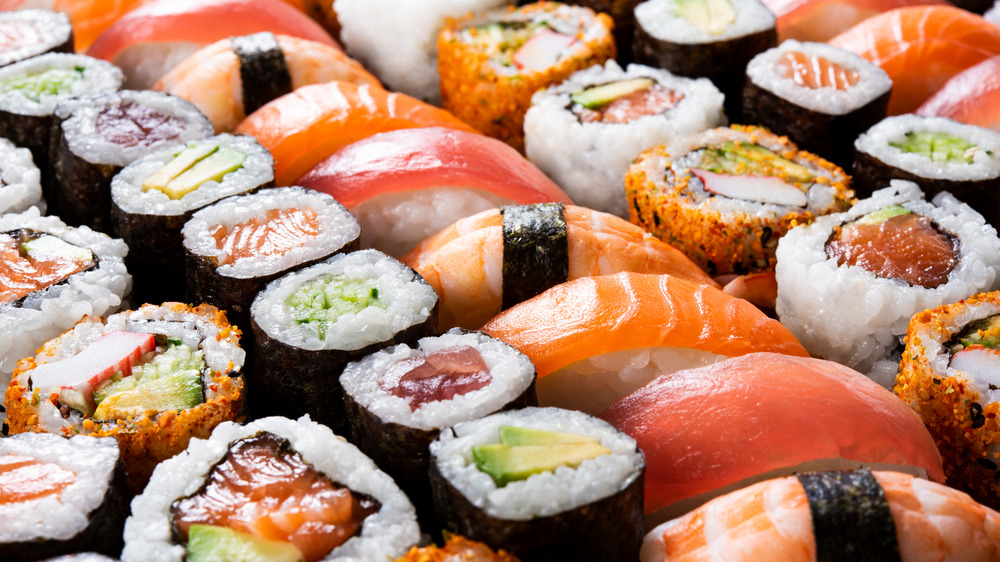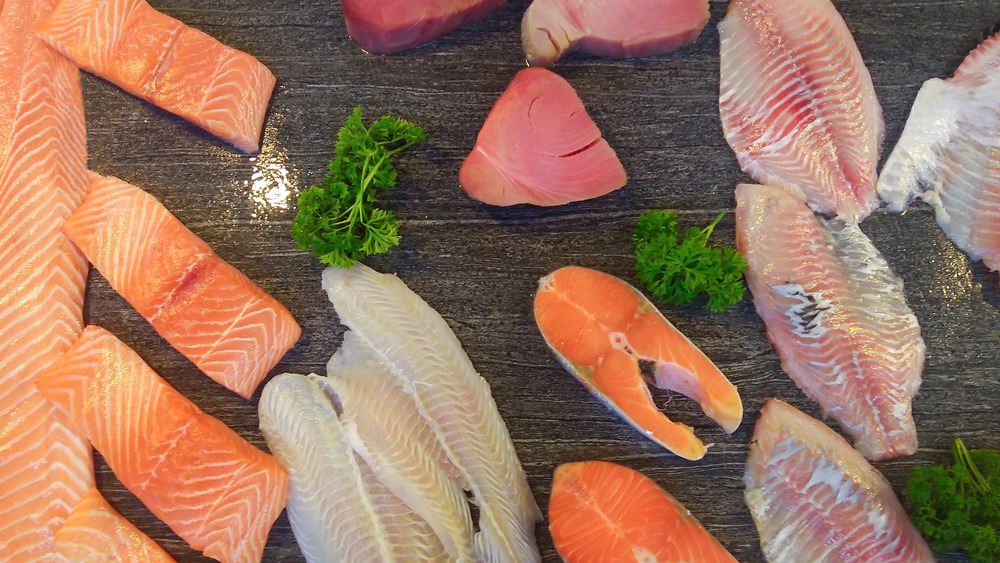Tuna Vs Salmon: Which One Is Better For You?
The U.S. Food and Drug Administration recommends that adults consume about 8 ounces of seafood each week because of the protein, iron, zinc, vitamins B12 and D, and heart-healthy omega-3 fatty acids that fish contains. But when tuna and salmon are on the menu, is one a better option? It depends on what benefits you're seeking, according to Healthline. Both are highly nutritious, but salmon as a fattier fish contains more omega-3 fats and vitamin D.
Americans already consume about 16 pounds of seafood per person annually, with salmon and canned tuna among the top choices. Unlike whiter varieties of fish, tuna and salmon have a firm texture and strong flavor, plus can be dark in color. Common varieties of tuna include yellowfin tuna, often used for sushi, and albacore or longfin tuna, commonly called white tuna. Popular salmon varieties include wild Pacific salmon such as coho, sockeye, and Chinook, as well as Atlantic salmon, which is typically farm-raised.
Tuna has a lean meatiness because of its lower fat content and high protein, about 21 g for 3 ounces of yellowfin tuna, per Healthline. Salmon has slightly less protein for the same amount (about 17 g to 18 g, depending on the type of salmon) and more calories. Three ounces of farmed Atlantic salmon contain about 177 calories compared with 124 calories in wild coho salmon, and 93 calories in yellowfin tuna.
Salmon is full of omega-3 fats, tuna is packed with antioxidants
But calories don't tell the whole story. Salmon has more calories because it's a fattier fish, allowing for a moist texture when cooked. But much of the fat in salmon comes from omega-3 fats, which lower blood pressure, slow the development of plaque in the arteries, reduce triglycerides, and lessen the likelihood of heart attack, abnormal heart rhythm, and stroke (via WebMD).
Consider: Three ounces of farmed Atlantic salmon contains 2,130 mg of omega-3s, compared with 91 mg in yellowfin tuna. One serving of salmon also provides a whopping dose of vitamin D, which the National Institutes of Health says protects older adults from osteoporosis, reduces inflammation, and helps modulate bodily processes such as metabolizing glucose and immune function. A 3-ounce serving of farmed Atlantic salmon contains 375 IU, or almost half the recommended daily value, compared with 59 IU in yellowfin tuna. Salmon also is higher in vitamin B12.
However, tuna packs a nutritional punch in niacin — almost 98 percent of the recommended daily value — which helps keep the digestive system, nervous system, and skin healthy (via the Mayo Clinic). Tuna also contains 140 percent of the daily value of selenium, a powerful antioxidant important for thyroid function, DNA production, and reproduction (via the National Institutes of Health). You really can't go wrong with either fish. But if you want the benefits of both, opt for a varied sushi platter.


